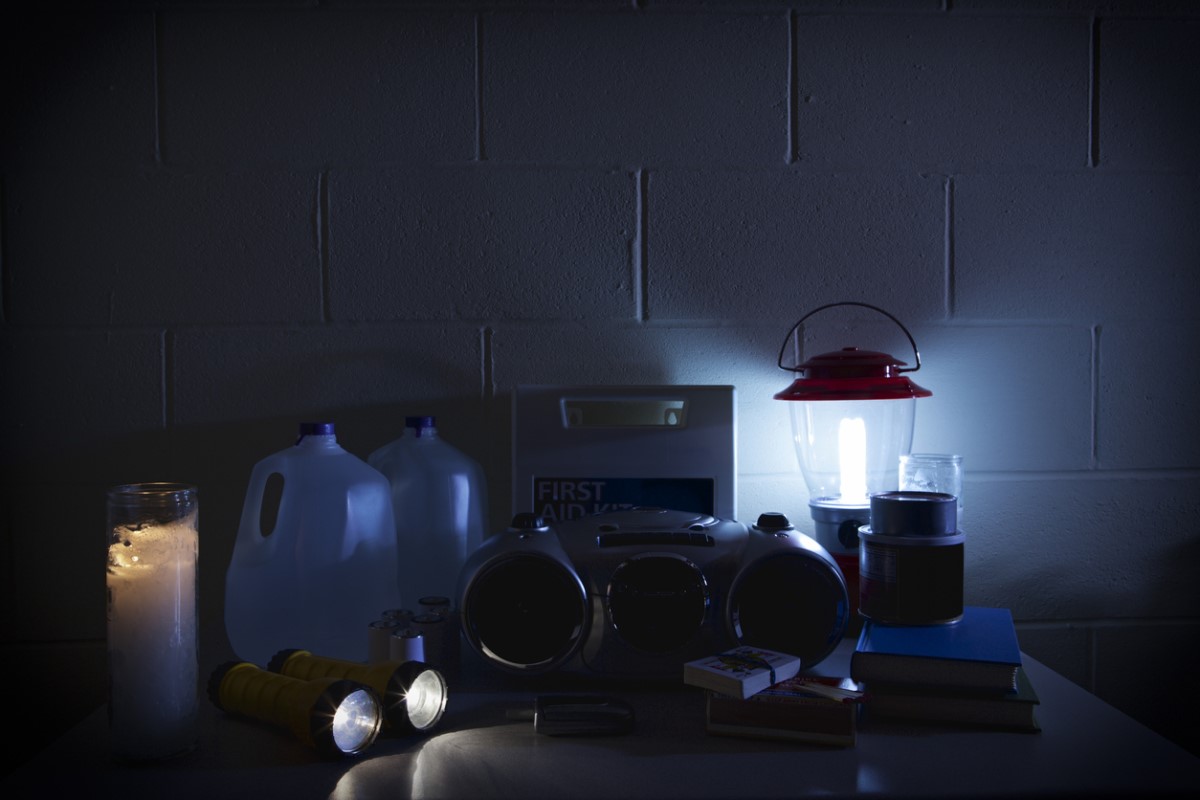We may earn revenue from the products available on this page and participate in affiliate programs. Learn More ›
Q: Last night, the power went out and, luckily, came back on only an hour later—soon enough for the food in the fridge to stay fresh. What causes power outages like this one? Is there anything we should do to ensure it doesn’t happen again?
A: An outage, or “blackout,” occurs when something interrupts the flow of electricity to the end-user, and an outage can affect a few homes or an entire city. With improved technology, outages are less common than they once were, but they still happen—sometimes lasting for days. Most of the time, there’s not much a homeowner can do to prevent an outage, though you could invest in a reliable personal generator that produces a limited amount of electricity until the power comes back on.
RELATED: 16 Problems a Power Outage Can Cause at Home
As soon as you experience an outage, do alert your utility provider. While some electric utilities have upgraded to digital systems that automatically detect outages on their lines, others still rely on notification from their customers before they come out to investigate the cause and restore power. Ahead are eight of the most common reasons your power might go out.

Lightning is responsible for many power outages.
If the lights go out in the middle of a thunderstorm, lightning is probably the culprit. Bolts can strike the tall poles that support power lines, damaging the lines and/or other equipment on the poles (fuses, transformers, relays), which interrupts the flow of electricity. Depending on the extent of the damage, the utility company may be able to make repairs in a few hours.
Ice presents a big risk to overhead power lines.
During an ice storm, heavy ice can build up on power lines, causing the lines to sag and break under the weight. If an ice storm is severe, it’s not uncommon for numerous power lines to break, and it can take a utility company a day or longer to repair them all.
Water and electricity don’t mix, so flooding is another weather-related risk of outages.
If high waters flood an electrical sub-stations (where electricity is distributed to various neighborhoods), the utility company will shut down the power to prevent damage to their equipment, and if the electricity to your home runs through that substation, you’ll be out of luck until the utility company can safely restore service. Fortunately, most substations are located on higher ground that’s unlikely to flood.
Some power outages are planned maintenance.
If a utility company has to perform maintenance on their equipment, they may need to temporarily turn off the power to protect their workers from electrical shock. When this is necessary, the company usually tries to notify customers in advance, either by phone call, email or snail mail. Planned outages usually last about one to three hours.
Automobile accidents can lead to an outage.
With electrical poles spread across most communities, it’s not uncommon for an automobile accident to involve a pole, knocking it over or damaging the power line. This will lead to an outage in the area served by that particular power line, usually just a few homes.

Work-related outages are avoidable but still all too common.
Excavation contractors and homeowners who plan to dig on their property are always advised to call Dig Safe (811) before doing breaking ground. Dig Safe is a national notification center that alerts local utility companies that have buried lines in the area so that they can send out technicians to mark the ground above their lines. Without clear locations, a contractor or homeowner could hit a buried electrical line (not all power lines run overhead) and trigger an outage.
Trees are responsible for numerous outages.
Falling tree branches that land on power lines are a recurring cause of power outages, but trees can also trigger outages if they’re growing directly below a power line and their branches make contact with the line. For that reason, most utility companies are permitted by law to cut down trees located on private property (or trim them) to ensure that the branches do not pose a risk to the lines.
Outages can be caused by squirrels.
Squirrels have been known to chew through power lines, which can result in the electrocution of the squirrel and a quick surge of electrical power that damages the power line and causes an outage. In communities where squirrels are abundant, utility companies will often install squirrel guards around utility poles to keep the squirrels from climbing the poles.
If your lights flicker or dim, you’re experiencing a brownout.
While an outage is a total disruption of electrical service, a brownout is only a partial disruption. Brownouts typically occur during peak energy usage periods, such as hot summer afternoons when many people are using their AC units and drawing more electricity than the electrical grid can supply. Appliances and electronics can be damaged by fluctuations in voltage (electrical pressure), so if you experience a brownout, it’s a good idea to unplug your computer, turn off the air conditioner, and don’t operate appliances, such as the microwave or dryer until the brownout is over.


